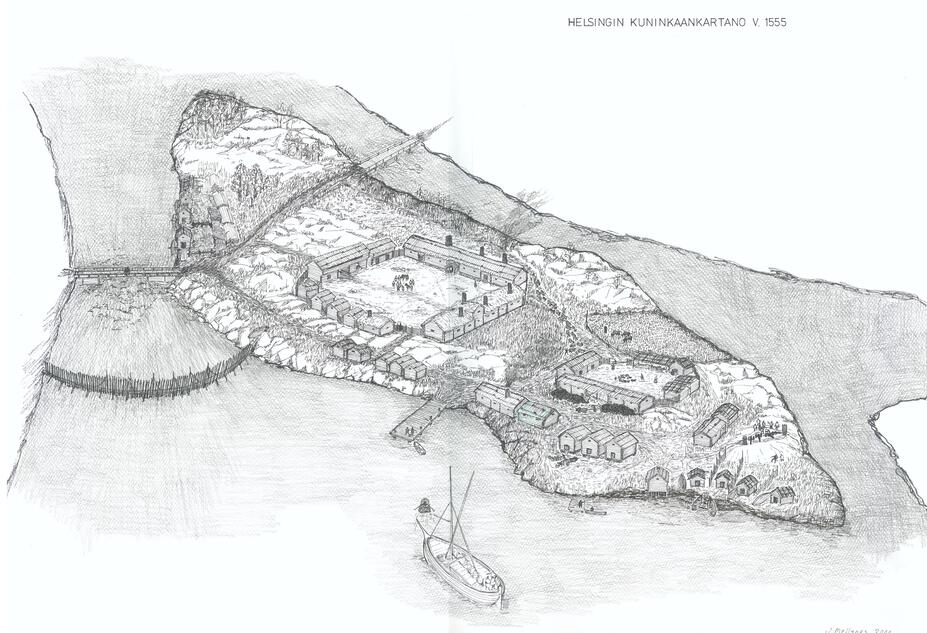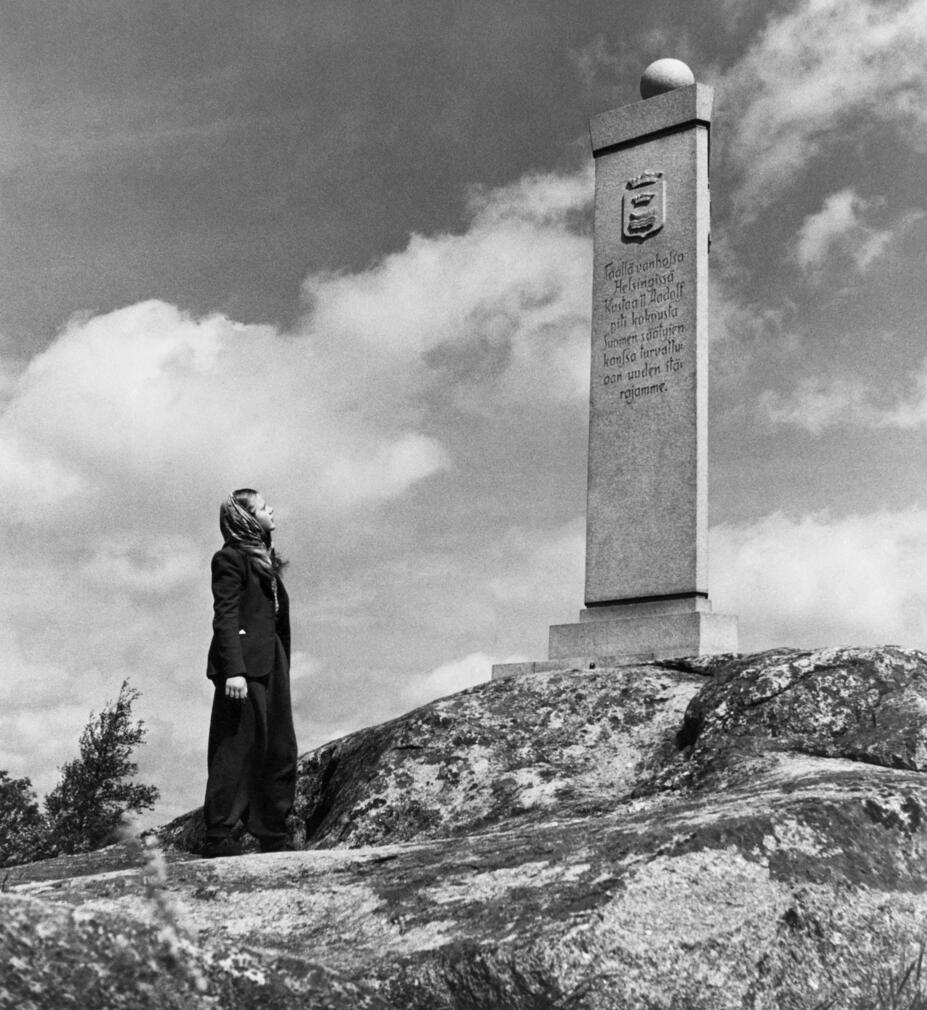A royal urban initiative
Helsinki was born in 1550 as part of Sweden’s trade policy in the Baltic Sea. The new city came about through the powerful order of the Swedish king Gustav I Vasa. The new city was to be built on the northern coast of the Baltic Sea, across from the Hanseatic city of Tallinn, with which it was due to compete over the lucrative eastern trade opportunities. These great plans did not materialise, however, and Helsinki’s role in its first 200 years was more humble than had been intended.
After taking the Swedish throne in 1523, Gustav Vasa quickly started to put into action doctrines of autocratic rule known from continental Europe. The king created an efficient bureaucratic administration in Sweden, where the king’s power and the grip of the law reached all parts of the kingdom. This administrative upheaval provided Sweden with new tools to further develop their trade policy. One such tool consisted in a small town on the Eastland region’s southern coast, right at the mouth of the Vantaanjoki river.
Mediaeval cities typically grew at a slow pace around established trading places through the decades or centuries. The birth of the City of Helsinki was an exceptional occurrence: it was practically an artificial city, proof of the king’s power. Helsinki was founded for reasons related to trade and strategy, following an idea of central planning.
Sweden wanted to strengthen its positioning in the Baltic Sea, and to engage in direct trade with the great economic powers of Europe. However, Lübeck and the Hanseatic League dominated the Baltic Sea region, and the Hanseatic city of Tallinn was very powerful. The urban infrastructure in the eastern areas of the Swedish kingdom were not as developed as on the western side, and uncontrolled peasant trade flourished. Gustav Vasa hoped to realign the whole trade structure in the area and to break Tallinn’s monopoly over the trade of Russian products.
Vanhakaupunki "Old Town": the first location of a new city
The exact location of the new coastal city was under consideration for a long time. At first, the island of Santahamina was a convincing candidate, as ships would have been able to arrive more easily. However, this would have made trading difficult, as there was no land connection from Santahamina to the mainland.n Instead, the king followed the advice of his confidante, Erik Fleming, and decided to locate the city in the Vanhankaupunginlahti bay area at the mouth of the Vantaanjoki river. The Vantaanjoki area, with its tributaries, had already been established as the basis of a settlement in the area in prehistoric times.
In 1550, the construction of Helsinki began in Koskela (Forsby in Swedish) on the peasant lands of the village. There was also a small island on the site, which was set aside as the site of the king's manor –– such castle islands were in vogue as an element of military technology in Europe in the 16th century. The city was settled by burghers from the Finnish cities of Porvoo, Tammisaari, Rauma and Ulvila, who were persuaded or forced to relocate to the new city. German and Dutch merchants soon followed, as did artisans and peasants from the surrounding Uusimaa region.
Residents of the new city lived closely together as 16th-century Helsinki was built on an area of approximately 800 by 200 metres on the shore of the bay. A church was erected on Kellomäki, the highest point in the area, while the market and the town hall were located next to the harbour as the only public buildings. The prosperous status of the city residents is illustrated by the fact that a school also operated in Helsinki right from its foundation. With approximately 800 inhabitants, the town was built entirely of wood, and to the eyes of a modern observer it looked more like a country village with turf roofs. Choosing the best materials to safeguard against outbreaks of fire was something Helsinki would learn the hard way on several occasions during its later history.
A city of war
Since its founding, Helsinki was an important military fortification for the Swedish Crown. In Gustav Vasa’s plans, the city would become a naval base and the cornerstone for the defence of Finland's southern coastal area. Soldiers began to gather in the castle camp for the first time as early as 1554. Ships and men arrived in ever greater numbers, and soon Helsinki looked more like a military camp than a city. The drunken commotion of the soldiers caused so much resentment among city residents that the king himself had to straighten out his forces: first a letter was sent outlining the appropriate behaviour for soldiers arriving in Helsinki. Later the king himself showed up in Helsinki, ordering the misbehaving troops to march out of the city.
In the 1570s, Helsinki's economy had sunken into a depression. Houses stood empty and Helsinki began to seem more and more like a munitions dump for the crown instead of a bourgeois trade town. The city was of vital importance to the Swedish war machine: Sweden fought for years in Estonian Livonia against Russia, and a huge fleet that had set out to besiege the trade town of Narva was gathered in front of Helsinki. Burgher ships left unused due to the wars and the economic depression were also taken over and sent back on the waters by the Swedish army.
When the wars against Russia came to an end, Helsinki’s chance to finally take a breath was short-lived. Charles IX of Sweden continued to wage war with Poland in the early years of the 17th century, and in 1621 Helsinki served as a location to summon the huge army that Gustav II Adolf took to the great European wars. Ultimately, there were very few periods in which military needs did not serve as the guiding force in the city's everyday life.
Literature
Aalto, Seppo. Sotakaupunki. Helsingin Vanhankaupungin historia 1550–1639. Helsinki: Otava, 2012.





